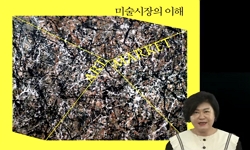본고에서는 지금까지 한일 양국의 역사학자를 중심으로 연구되어 온 나가사키현(長崎県) 소재의 대마도에 대해서, 일본 내의 마이너리티인 재일조선인은 어떻게 인식했는지에 대해서 ...
http://chineseinput.net/에서 pinyin(병음)방식으로 중국어를 변환할 수 있습니다.
변환된 중국어를 복사하여 사용하시면 됩니다.
- 中文 을 입력하시려면 zhongwen을 입력하시고 space를누르시면됩니다.
- 北京 을 입력하시려면 beijing을 입력하시고 space를 누르시면 됩니다.
https://www.riss.kr/link?id=A104243307
- 저자
- 발행기관
- 학술지명
- 권호사항
-
발행연도
2017
-
작성언어
-
-
주제어
대마도 ; 섬 ; 로컬리티 ; 재일조선인 ; 김달수 ; 역사의 탈문맥화 ; 경계 Tsushima Island ; island ; locality ; Korean Residents in Japan ; KimDalsu ; decontextualization of history ; boundary
-
KDC
300
-
등재정보
KCI등재
-
자료형태
학술저널
-
수록면
273-292(20쪽)
- 제공처
-
0
상세조회 -
0
다운로드
부가정보
국문 초록 (Abstract)
본고에서는 지금까지 한일 양국의 역사학자를 중심으로 연구되어 온 나가사키현(長崎県) 소재의 대마도에 대해서, 일본 내의 마이너리티인 재일조선인은 어떻게 인식했는지에 대해서 분석했다. 특히, 최근 한국과 일본에서는 일본의 지역 항구도시 및 섬 등의지역 문화를 재조명하는 이른바 로컬리티 및 글로컬리즘에 관련된 연구가 활발해지면서, 지역도시의 문화, 문학, 역사, 출판, 관광 등에 대한 연구가 다각적으로 이루어지고 있다. 따라서, 본고에서는 이와 같은 동시대의 연구 동향을 시야에 넣고, 기존의 한일 역사학자들에 의해 연구되어 온 일국가적인 대마도 인식과는 달리 재일조선인은 어떠한 대항 서사를 만들어내고 있는지를 고찰했다. 그 결과, 재일조선인 작가 김달수는 1970년 전후로 일본 속의 조선 문화를 발굴하는 이른바 한일 고대관계사 연구자로 변신하게 되고, 대마도까지 (1975년)를 통해서 대마도 인식에 대한 새로운 사유의 가능성을 제시했다. 하지만 김달수는 본 작품에서 기존의 한일 양국의 연구자들에 의해 정립된 대마도 인식과는 다른 해석의 가능성을 발견하면서도, 구체적인 사유 방법을 확립하지 못하고 결과적으로 식민과 피식민의 서사 구조에 함몰되면서 사유에 실패하게 된다. 또한, 김달수는 대마도까지 를 통해서 한국과 일본을 가르는 경계로서의 대한해협=현해탄에 대한 새로운 해양 인식을 제시하고 있지만, 근대와 전근대의 연속성을 강조하는 서사 구조 및 식민 유재로서의 재일조선인을 강조한 나머지, 오히려 역사의 탈문맥화를 가속화시킴과 동시에 경계의 초월 불가능성을 증폭시켰다고 해석할 수 있다.
다국어 초록 (Multilingual Abstract)
This article analyzed the perception of Korean residents in Japan, who are a miniority in the country, towards Tsushima Island, Nagasaki, which has been researched by historians in South Korea and Japan. Recently, as research on locality and glocalism...
This article analyzed the perception of Korean residents in Japan, who are a miniority in the country, towards Tsushima Island, Nagasaki, which has been researched by historians in South Korea and Japan. Recently, as research on locality and glocalism is being actively conducted regarding marine culture of Japan including local cities and islands, multidimensional studies on culture, literature, history, publishing, and tourism, among others, related to local cities have been published. Therefore, considering the research trend, this article discussed the counter-narrative among Korean residents in Japan concerning Tsushima Island, compared to the unilateral views on the island among Korean and Japanese historians. The results of this study showed the Korean-Japanese writer Kim Dalsu turned into a researcher of the ancient relationship between Korea and Japan, discovering Joseon(Korean) culture in Japan around the 1970s, and proposed a new possibility regarding perception towards Tsushima Island in his work Until Tsushima Island (1975). However, in this book, despite having discovered the possibility of new interpretation of Tsushima Island that is different from one established by historians in Korea and Japan, he failed to develop a specific method of reasoning and, as a result, was lost in the narrative of the ruler and the ruled. Also, in Until Tsushima Island , Kim proposed a new perception towards the Korea Straits as a boundary between Korea and Japan, but exacerbated decontextualization of the history and impossibility of transcending the border by emphasizing the narartive structure that focuses on the continuity of modern and pre-modern eras and on Korean residents in Japan as remnants of the colonialism.
목차 (Table of Contents)
- Ⅰ. 들어가며
- Ⅱ. 전후 타자로서의 대마도 담론
- Ⅲ. 김달수의 역사 사유 방법
- Ⅳ. 역사의 재구성과 경계의 초월 불가능성
- Ⅴ. 나오며
- Ⅰ. 들어가며
- Ⅱ. 전후 타자로서의 대마도 담론
- Ⅲ. 김달수의 역사 사유 방법
- Ⅳ. 역사의 재구성과 경계의 초월 불가능성
- Ⅴ. 나오며
- 참고문헌
- 〈Abstract〉
동일학술지(권/호) 다른 논문
-
반구대암각화의 비교고찰 - 부산· 경남의 선사시대 지역성
- 호남대학교 인문사회과학연구소
- 김재윤(Kim Jaeyoun)
- 2017
- KCI등재
-
- 호남대학교 인문사회과학연구소
- 송영진(Song Youngjin)
- 2017
- KCI등재
-
조선시대 수영(水營)에 대한 고지도 및 발굴유구 비교연구
- 호남대학교 인문사회과학연구소
- 최인화(Choi Inhwa)
- 2017
- KCI등재
-
5· 16군사정권과 김정한 소설의 내적 모랄 - 미발표작 『자유에의 길』을 통해 본 내적 분열과 자기 검열에 대하여
- 호남대학교 인문사회과학연구소
- 박대현(Park, Daehyun)
- 2017
- KCI등재





 스콜라
스콜라





